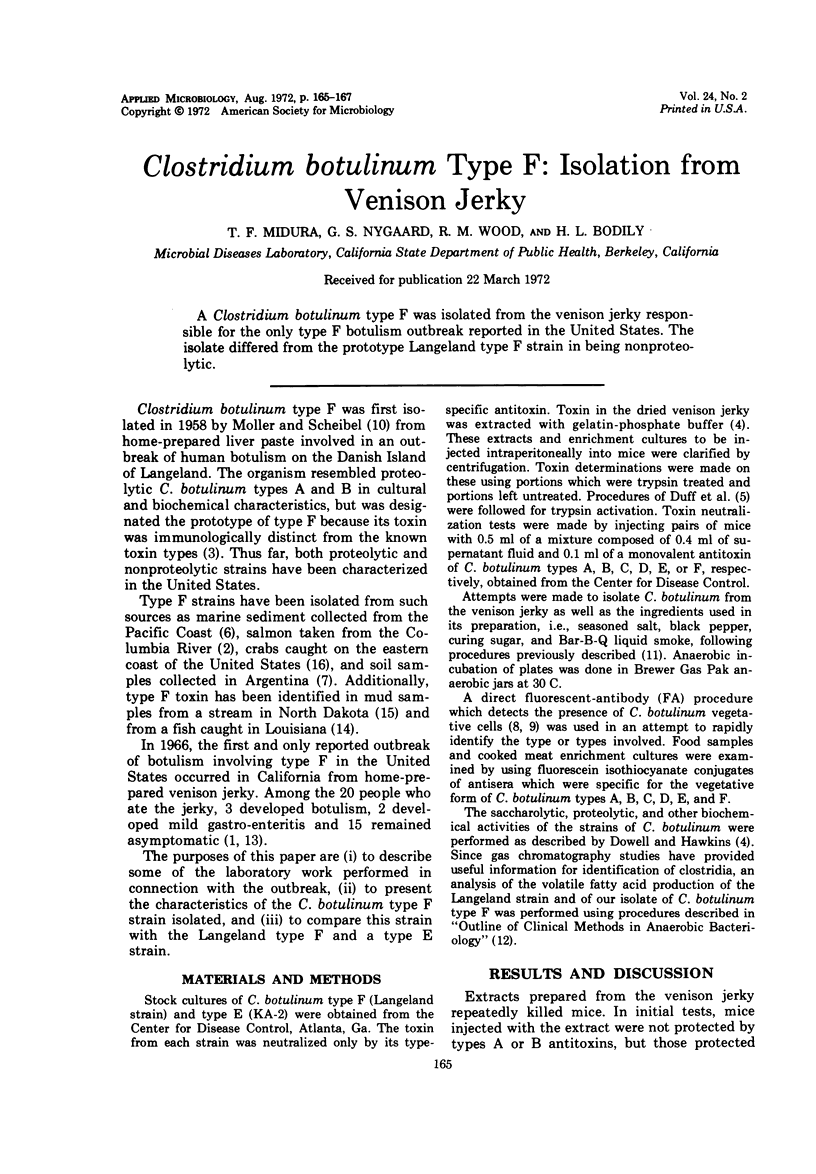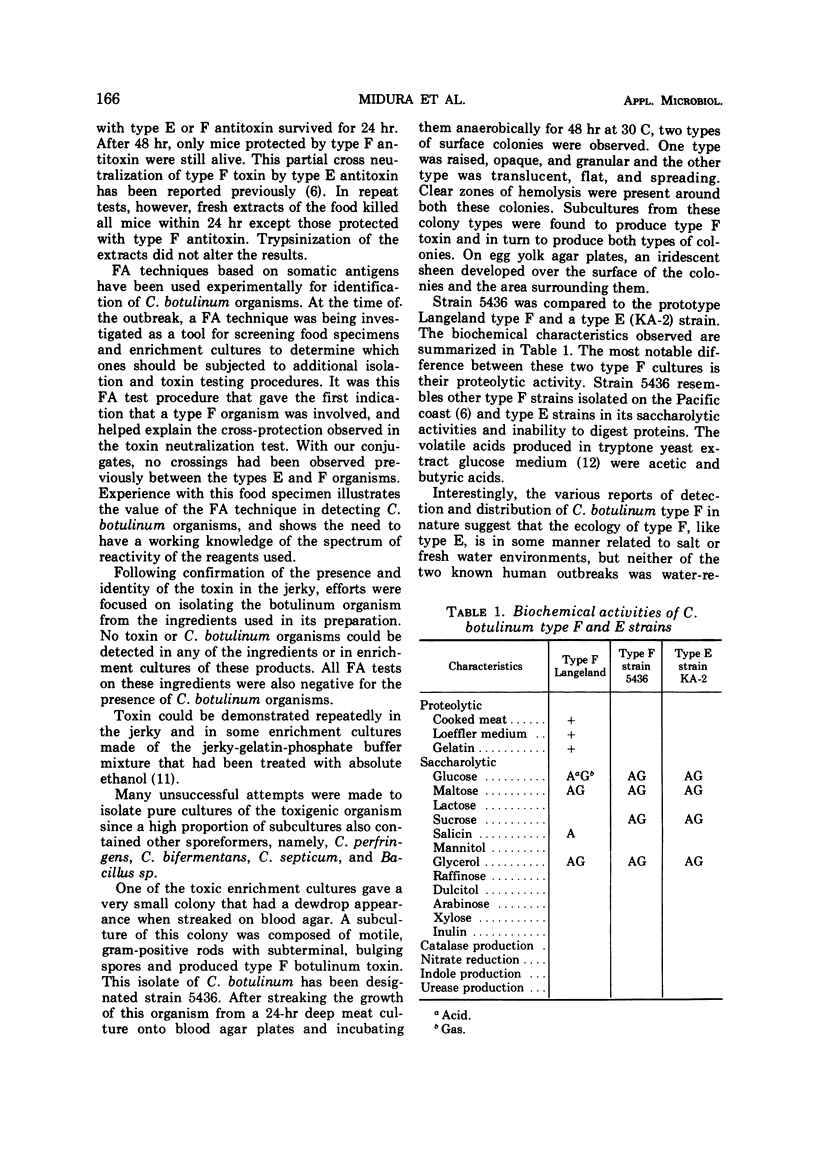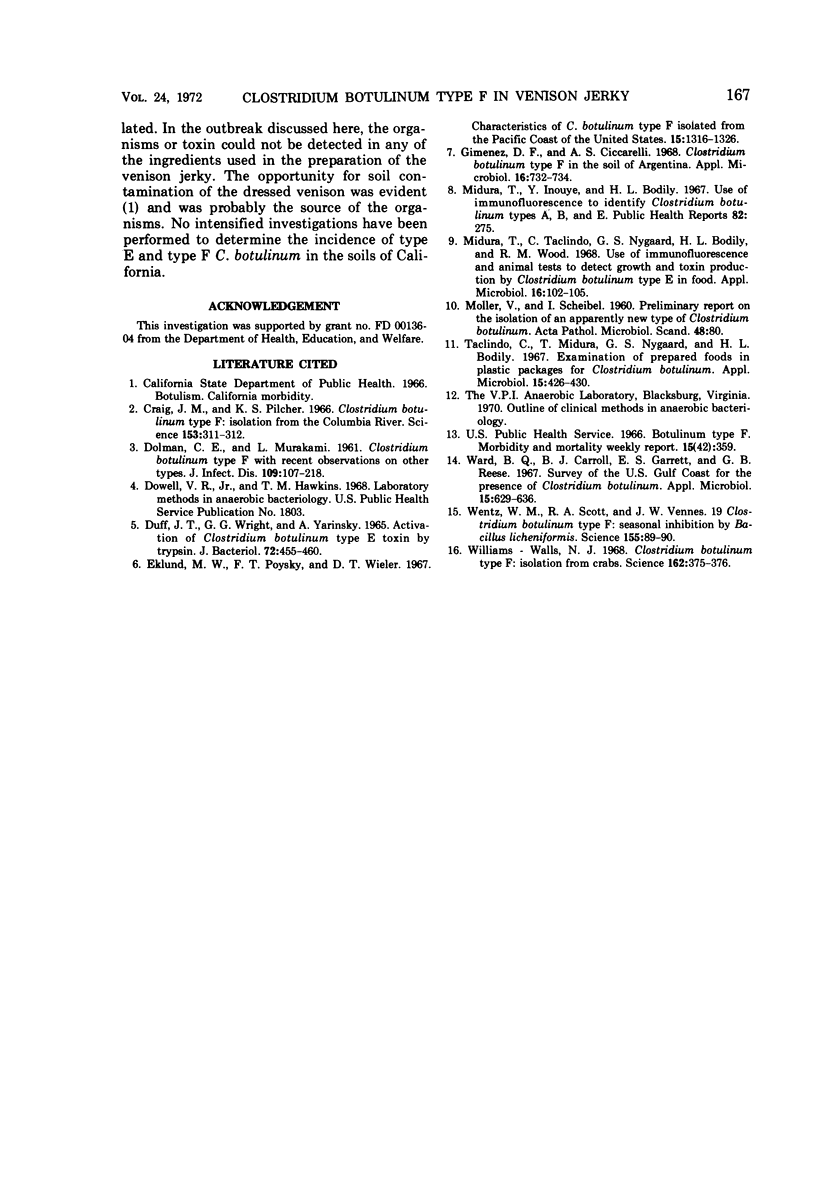Abstract
A Clostridium botulinum type F was isolated from the venison jerky responsible for the only type F botulism outbreak reported in the United States. The isolate differed from the prototype Langeland type F strain in being nonproteolytic.
Full text
PDF


Selected References
These references are in PubMed. This may not be the complete list of references from this article.
- Craig J. M., Pilcher K. S. Clostridium botulinum Type F: Isolation from Salmon from the Columbia River. Science. 1966 Jul 15;153(3733):311–312. doi: 10.1126/science.153.3733.311. [DOI] [PubMed] [Google Scholar]
- DUFF J. T., WRIGHT G. G., YARINSKY A. Activation of Clostridium botulinum type E toxin by trypsin. J Bacteriol. 1956 Oct;72(4):455–460. doi: 10.1128/jb.72.4.455-460.1956. [DOI] [PMC free article] [PubMed] [Google Scholar]
- Eklund M. W., Poysky F. T., Wieler D. I. Characteristics of Clostridium botulinum type F isolated from the Pacific Coast of the United States. Appl Microbiol. 1967 Nov;15(6):1316–1323. doi: 10.1128/am.15.6.1316-1323.1967. [DOI] [PMC free article] [PubMed] [Google Scholar]
- Giménez D. F., Ciccarelli A. S. Clostridium botulinum type F in the soil of Argentina. Appl Microbiol. 1968 May;16(5):732–734. doi: 10.1128/am.16.5.732-734.1968. [DOI] [PMC free article] [PubMed] [Google Scholar]
- MOLLER V., SCHEIBEL I. Preliminary report on the isolation of an apparently new type of CI. botulinum. Acta Pathol Microbiol Scand. 1960;48:80–80. doi: 10.1111/j.1699-0463.1960.tb04741.x. [DOI] [PubMed] [Google Scholar]
- Midura T. F., Inouye Y., Bodily H. L. Use of immunofluorescence to identify Clostridium botulinum types A, B, and E. Public Health Rep. 1967 Mar;82(3):275–279. [PMC free article] [PubMed] [Google Scholar]
- Midura T., Taclindo C., Jr, Nygaard G. S., Bodily H. L., Wood R. M. Use of immunofluorescence and animal tests to detect growth and toxin production by Clostridum botulinum type E in food. Appl Microbiol. 1968 Jan;16(1):102–105. doi: 10.1128/am.16.1.102-105.1968. [DOI] [PMC free article] [PubMed] [Google Scholar]
- Taclindo C., Jr, Nygaard G. S., Bodily H. L. Examination of prepared foods in plastic packages for Clostridium botulinum. Appl Microbiol. 1967 Mar;15(2):426–430. doi: 10.1128/am.15.2.426-430.1967. [DOI] [PMC free article] [PubMed] [Google Scholar]
- Ward B. Q., Carroll B. J., Garrett E. S., Reese G. B. Survey of the U.S. Gulf Coast for the presence of Clostridium botulinum. Appl Microbiol. 1967 May;15(3):629–636. doi: 10.1128/am.15.3.629-636.1967. [DOI] [PMC free article] [PubMed] [Google Scholar]
- Wentz M. W., Scott R. A., Vennes J. W. Clostridium botulinum type F: seasonal inhibition by bacillus licheniformis. Science. 1967 Jan 6;155(3758):89–90. doi: 10.1126/science.155.3758.89. [DOI] [PubMed] [Google Scholar]
- Williams-Walls N. J. Clostridium botulinum Type F: Isolation from Crabs. Science. 1968 Oct 18;162(3851):375–376. doi: 10.1126/science.162.3851.375. [DOI] [PubMed] [Google Scholar]


